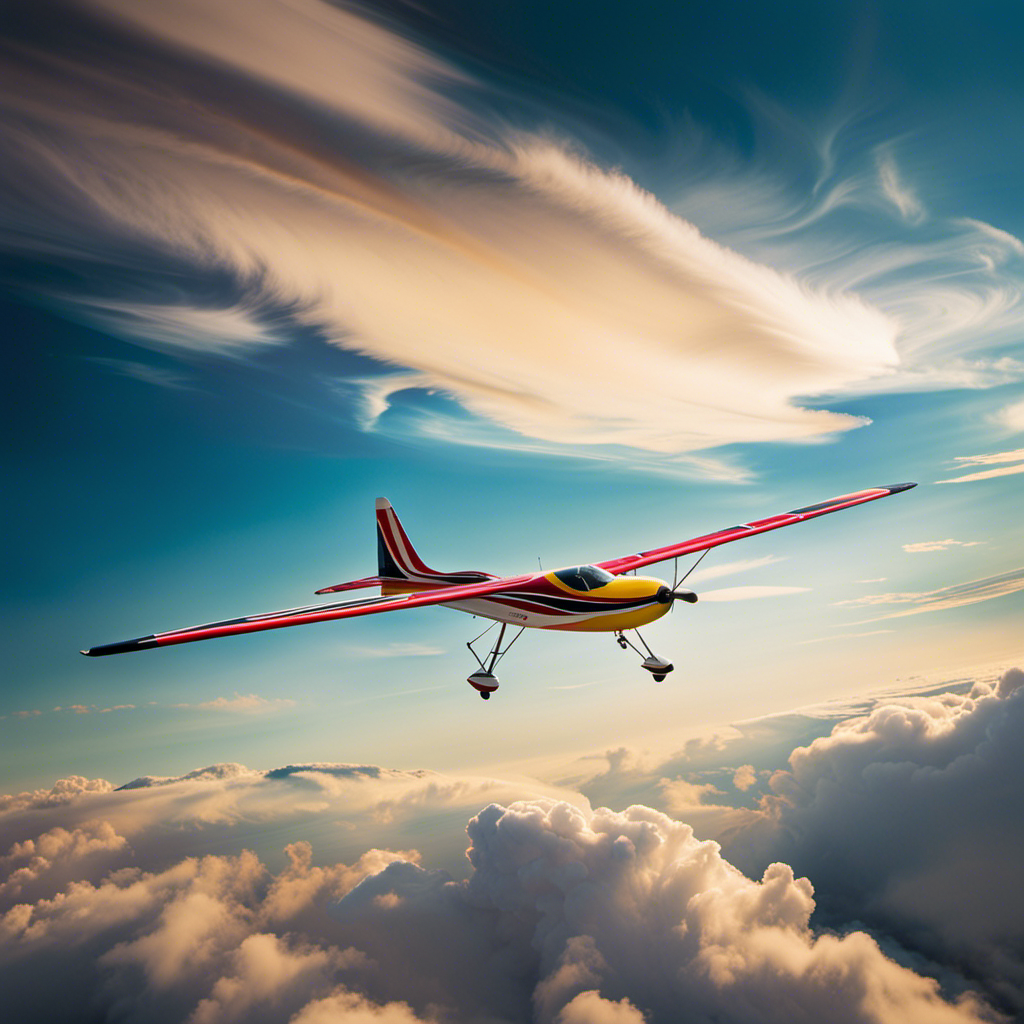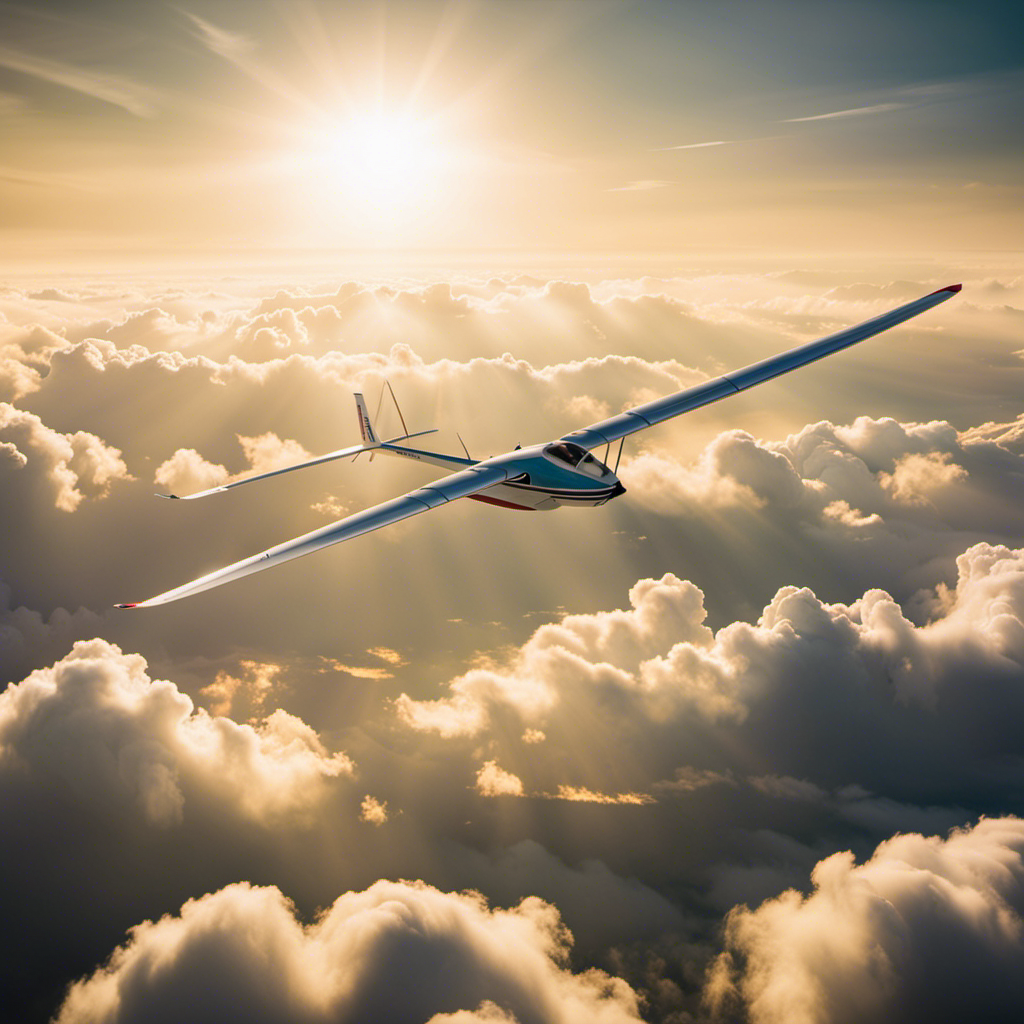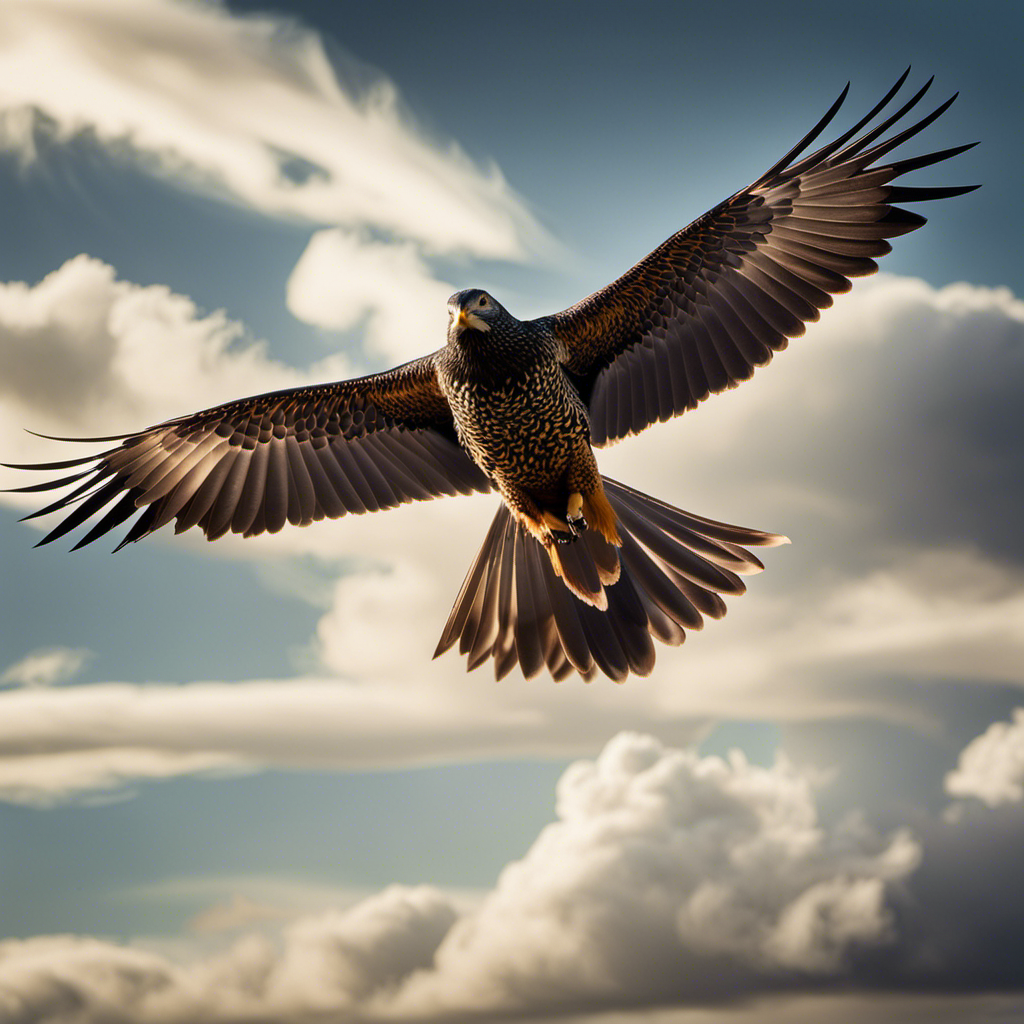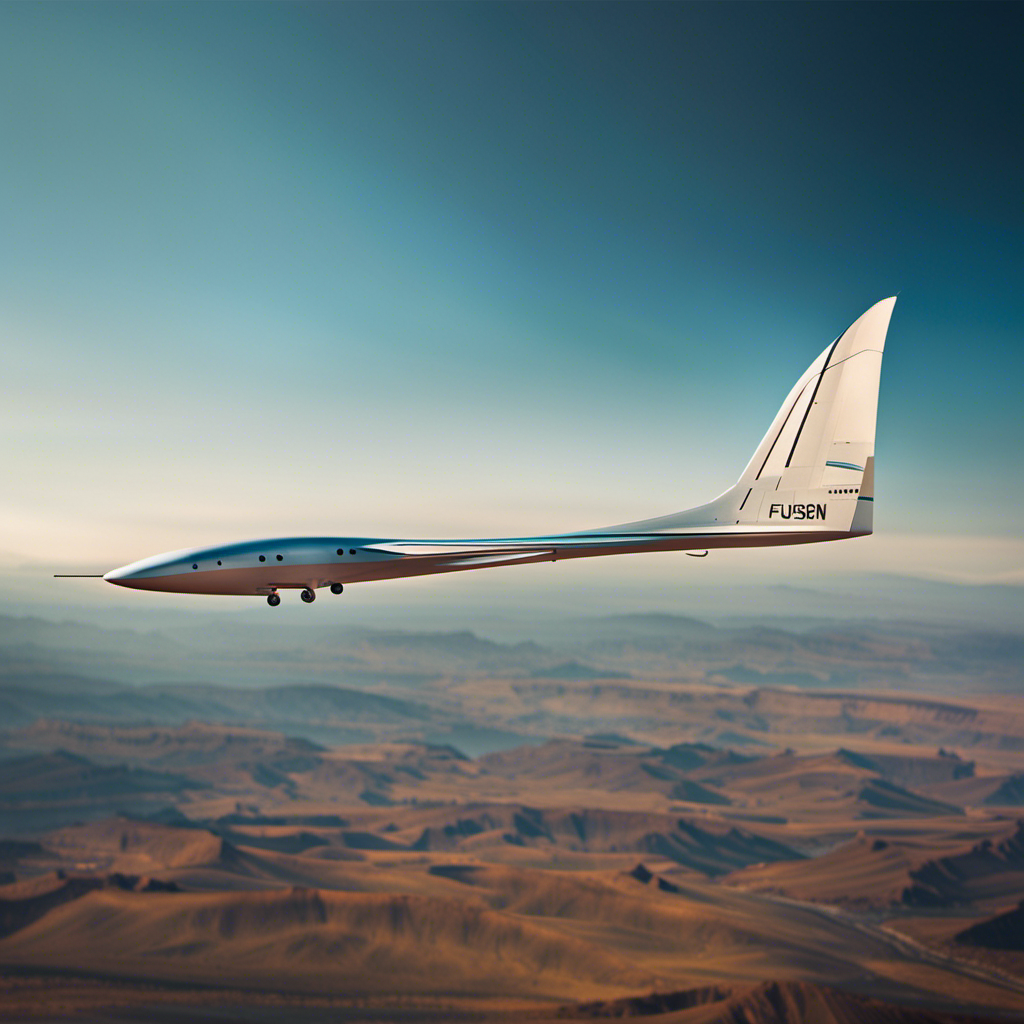Welcome to the exciting world of glider pilot training, where the dream of flying through the skies becomes a reality.
In this article, I will take you on a deep dive into the fascinating journey of elevating your education in glider piloting.
From mastering the art of flight theory to navigating unpredictable weather patterns, we will explore the essential techniques and skills required to become a proficient glider pilot.
So buckle up and get ready to embark on an extraordinary adventure of a lifetime.
Key Takeaways
- Glider pilot training allows individuals to gain a deeper understanding of aerodynamics and meteorology, enhancing their decision-making and problem-solving skills.
- Training as a glider pilot can lead to personal growth by improving self-confidence, self-discipline, focus, and concentration.
- A key aspect of glider pilot training is learning about aerodynamics to optimize glider performance and achieve maximum glide ratio and range.
- Meteorology plays a crucial role in glider pilot training as pilots learn to interpret weather forecasts and reports, identify favorable and unfavorable conditions, and adjust flight plans accordingly to ensure safety and optimize the flight experience.
Introduction to Glider Pilot Training
If you’re interested in becoming a glider pilot, the first step is to understand the basics of glider pilot training. As a glider pilot, you’ll learn how to safely operate and navigate a glider aircraft.
The training typically begins with ground instruction, where you’ll gain knowledge on aerodynamics, weather patterns, and flight regulations. You’ll also learn about the different components of a glider and how to perform pre-flight inspections.
Once you have a solid foundation of theoretical knowledge, you’ll progress to flight training. This involves practicing takeoffs, landings, and various flight maneuvers under the guidance of a certified flight instructor.
Understanding the basics of flight theory is crucial, as it will help you comprehend and apply the principles of flight during your training.
Understanding the Basics of Flight Theory
Understanding the basics of flight theory is crucial for aspiring glider pilots. As a pilot, I have learned that flight theory provides the foundation for safe and efficient flying. Here are some key concepts to grasp:
- Bernoulli’s principle: Explains how differences in air pressure generate lift.
- Angle of attack: The angle between the wing’s chord line and the oncoming airflow, affecting lift and drag.
- Center of gravity: The point where the aircraft’s weight is concentrated, influencing stability and maneuverability.
- Flight controls: Understanding how the ailerons, elevators, and rudder work together to control the aircraft’s movement.
By mastering these principles, I can effectively manipulate the glider’s flight characteristics.
Now, let’s delve into getting familiar with glider equipment and controls, which is the next important step in becoming a competent glider pilot.
Getting Familiar with Glider Equipment and Controls
Now let’s take a look at the equipment and controls you’ll need to become familiar with as a glider pilot.
First, we have the control stick, also known as the joystick. It’s used to maneuver the glider and control pitch, roll, and yaw.
Next, we have the rudder pedals, which control the glider’s yaw movement. These pedals are similar to those in an airplane.
Additionally, we have the instrument panel, where you’ll find all the necessary gauges and instruments such as the altimeter, airspeed indicator, and variometer. It’s important to understand how to read these instruments accurately to ensure a safe flight.
Finally, we have the release handle, which allows you to disconnect the glider from the tow line during takeoff.
With these essential controls and equipment, you’ll be well-prepared to learn the takeoff and landing techniques in the next section.
Learning Takeoff and Landing Techniques
Let’s start by discussing the proper techniques for takeoff and landing as a glider pilot. As a glider pilot, it is crucial to master these skills to ensure safe and smooth flights. During takeoff, it is important to maintain a proper airspeed and smoothly lift off the ground, using the elevator to control the pitch. When landing, it is essential to plan the approach, maintain a stable glide path, and control the descent rate using the airbrakes. To help you visualize these techniques, here is a table summarizing the key points:
| Takeoff Techniques | Landing Techniques |
|---|---|
| Maintain proper airspeed | Plan the approach |
| Smooth lift off | Maintain stable glide path |
| Control pitch with elevator | Control descent rate with airbrakes |
Mastering Airborne Maneuvers and Techniques
Once you’ve mastered the takeoff and landing techniques, it’s time to focus on mastering airborne maneuvers and techniques. These skills are crucial for glider pilots to navigate the skies with precision and efficiency.
One important maneuver to learn is the stall recovery. By intentionally stalling the glider and practicing recovering from it, you’ll gain the confidence to handle unexpected stalls in real flight situations.
Another essential technique is the steep turn. This maneuver allows you to change direction quickly while maintaining a constant altitude. By understanding the principles of banking and coordination, you’ll be able to execute smooth and controlled turns.
As you become proficient in these airborne maneuvers, you’ll develop a solid foundation for the next phase of your training: developing skills in thermaling and soaring. In this phase, you’ll learn to harness the power of rising air currents to stay aloft for extended periods.
Developing Skills in Thermaling and Soaring
As you become proficient in airborne maneuvers and techniques, you’ll start developing skills in thermaling and soaring to harness rising air currents. This is a crucial aspect of glider pilot training, allowing you to stay aloft for extended periods and cover greater distances.
Here are four key elements to focus on when honing your thermaling and soaring skills:
-
Reading the air: Understanding how to identify and interpret indicators of rising air, such as cloud formations, wind patterns, and thermal triggers.
-
Entering thermals: Mastering the art of entering a thermal, which involves adjusting your bank angle, speed, and coordination to maximize lift.
-
Centering thermals: Learning how to center yourself within a thermal, using coordinated control inputs and maintaining an optimal bank angle to stay in the core and gain altitude.
-
Soaring techniques: Exploring different soaring techniques, such as ridge soaring and wave soaring, to take advantage of specific atmospheric conditions.
Understanding Weather Patterns and Safety Precautions
To understand weather patterns and ensure safety, you need to familiarize yourself with the indicators of rising air and the precautions associated with glider flying. As a glider pilot, it is essential to have a deep understanding of the weather conditions that can affect your flight. By recognizing the signs of rising air, such as cumulus clouds, thermal sources, and wind patterns, you can maximize your chances of soaring success. Additionally, there are important safety precautions to consider, such as avoiding thunderstorms, monitoring wind speed and direction, and maintaining proper altitude. These measures can help you navigate through challenging weather conditions and ensure a safe and enjoyable flight. By staying informed and prepared, you can confidently take to the skies and explore the exhilarating world of glider flying.
| Indicators of Rising Air | Safety Precautions |
|---|---|
| Cumulus clouds | Avoid thunderstorms |
| Thermal sources | Monitor wind speed and direction |
| Wind patterns | Maintain proper altitude |
Gaining Confidence in Cross-Country Flying
Gaining confidence in cross-country flying requires understanding weather patterns and taking necessary safety precautions. As a glider pilot, I have learned that being aware of the weather conditions is crucial for a successful flight. By studying meteorology and analyzing weather reports, I can anticipate changes in wind patterns, thermals, and turbulence. This knowledge allows me to plan my flight path accordingly and avoid potentially hazardous conditions.
Additionally, I always make sure to thoroughly inspect my glider before taking off, ensuring that all systems are in proper working order. This includes checking the control surfaces, instruments, and safety equipment. By following these safety protocols and staying informed about the weather, I can confidently embark on cross-country flights, knowing that I have taken the necessary precautions to ensure a safe journey.
Transitioning to advanced techniques for glider pilots, there are several strategies that can further enhance our skills and capabilities in the air.
Advanced Techniques for Glider Pilots
Transitioning to advanced techniques, glider pilots can further enhance their skills and capabilities in the air. They can do this by practicing precision landings and mastering thermaling techniques. These techniques not only require precision and finesse but also a deep understanding of the intricate dynamics of the glider.
To truly excel in these advanced maneuvers, pilots must focus on the following:
- Perfecting the art of precision landings, where every movement and adjustment counts to achieve a smooth and accurate touchdown.
- Mastering thermaling techniques, which involve finding and utilizing rising columns of warm air to gain altitude and extend flight time.
- Developing a keen sense of situational awareness, allowing pilots to make quick and informed decisions based on environmental conditions and aircraft performance.
By honing these skills, glider pilots can navigate the skies with grace and confidence. They will be ready to take on the thrilling challenges that lie ahead.
[Transition Sentence to the next section: ‘The Thrill and Rewards of Glider Pilot Training’]
The Thrill and Rewards of Glider Pilot Training
After mastering advanced techniques for glider pilots, I was eager to delve into the next stage of my training: experiencing the thrill and rewards of glider pilot training.
This phase of my journey allowed me to fully embrace the exhilaration that comes with soaring through the skies, relying solely on the forces of nature. As I soared higher and higher, I felt a profound sense of freedom and connection with the elements.
The rewards of glider pilot training were abundant. Not only did I gain a deeper understanding of aerodynamics and meteorology, but I also developed invaluable skills in decision-making, problem-solving, and maintaining a calm demeanor in high-pressure situations.
The thrill of gliding through the air, combined with the personal growth and skills acquired, made every moment of my glider pilot training truly unforgettable.
Frequently Asked Questions
What is the cost of glider pilot training?
The cost of glider pilot training varies depending on the flight school and location. Generally, it can range from $5,000 to $15,000. It’s important to research and compare different programs to find the best option for your budget.
How long does it take to become a certified glider pilot?
Becoming a certified glider pilot is like soaring to new heights. It typically takes around 60-80 flight hours, plus ground school and exams. The journey is challenging but rewarding as you gain the skills to conquer the skies.
Are there any physical requirements to become a glider pilot?
Yes, there are physical requirements to become a glider pilot. These include having good vision, being in overall good health, and meeting certain weight restrictions set by the glider manufacturer.
Can I fly a glider if I have a fear of heights?
Flying a glider can be challenging for individuals with acrophobia, as it involves being at high altitudes. Overcoming this fear through therapy or exposure can enable one to pursue glider pilot training successfully.
Is glider pilot training more difficult than training for powered aircraft?
No, glider pilot training is not more difficult than training for powered aircraft. Both require similar skills and knowledge, but glider training may focus more on aerodynamics and energy management.
Conclusion
In conclusion, glider pilot training is a breeze. I mean, who needs engines when you can gracefully soar through the sky like a majestic bird?
It’s all about understanding flight theory, mastering maneuvers, and keeping an eye on those pesky weather patterns.
So leave your fear of heights on the ground and embrace the thrill of gliding through the clouds. Trust me, once you’ve experienced the rewards of glider pilot training, you’ll never want to come back down to earth.
With a heart that soars as high as the skies, Aria, affectionately known as “Skylark,” is the driving force behind Soaring Skyways. Her journey into the gliding world began as a young dreamer gazing up at the soaring birds, yearning to experience the weightlessness and freedom they embodied. With years of experience both in the cockpit and behind the scenes, Aria’s commitment to the gliding community is unwavering.










